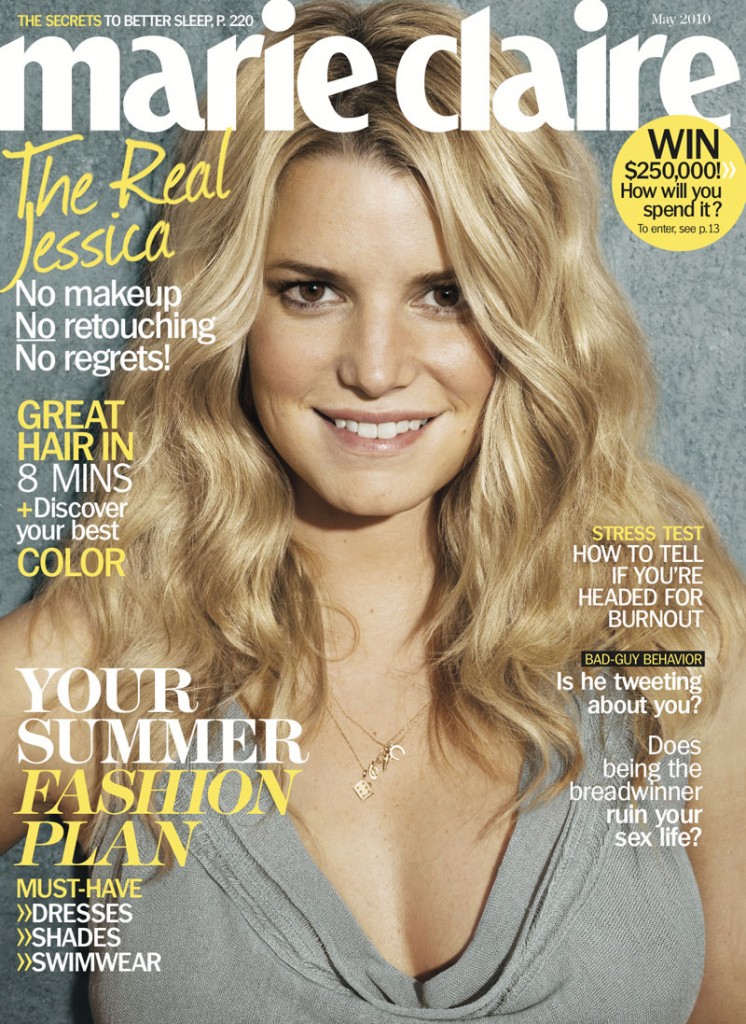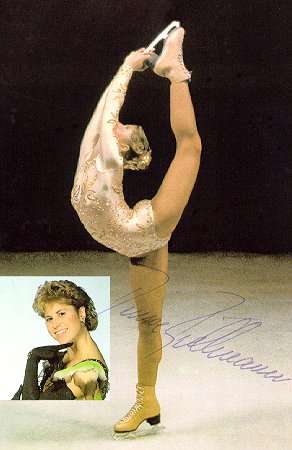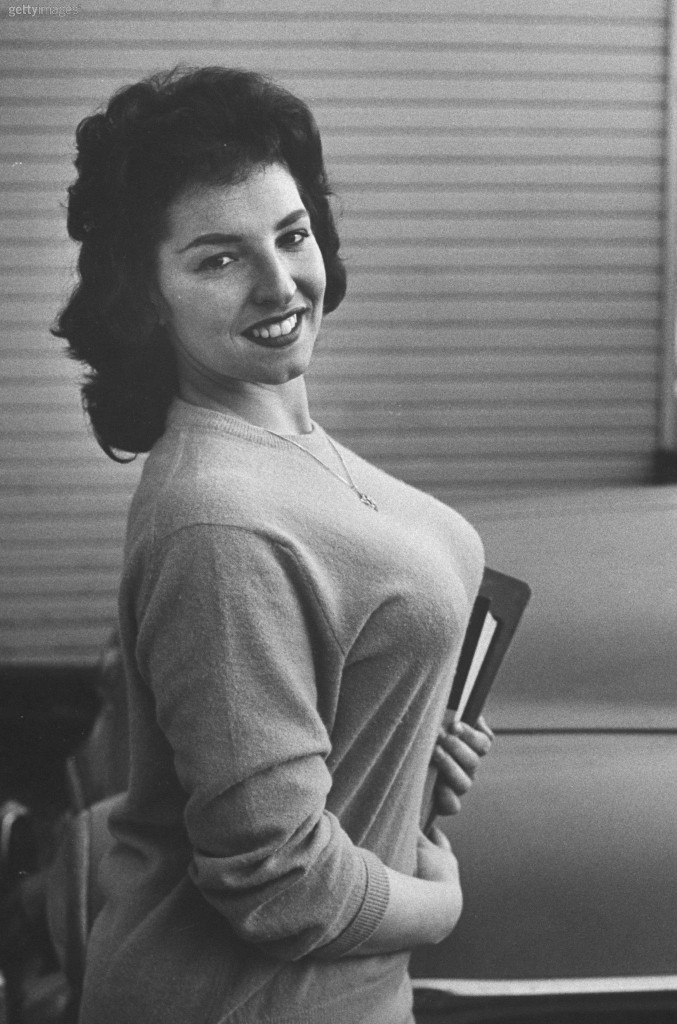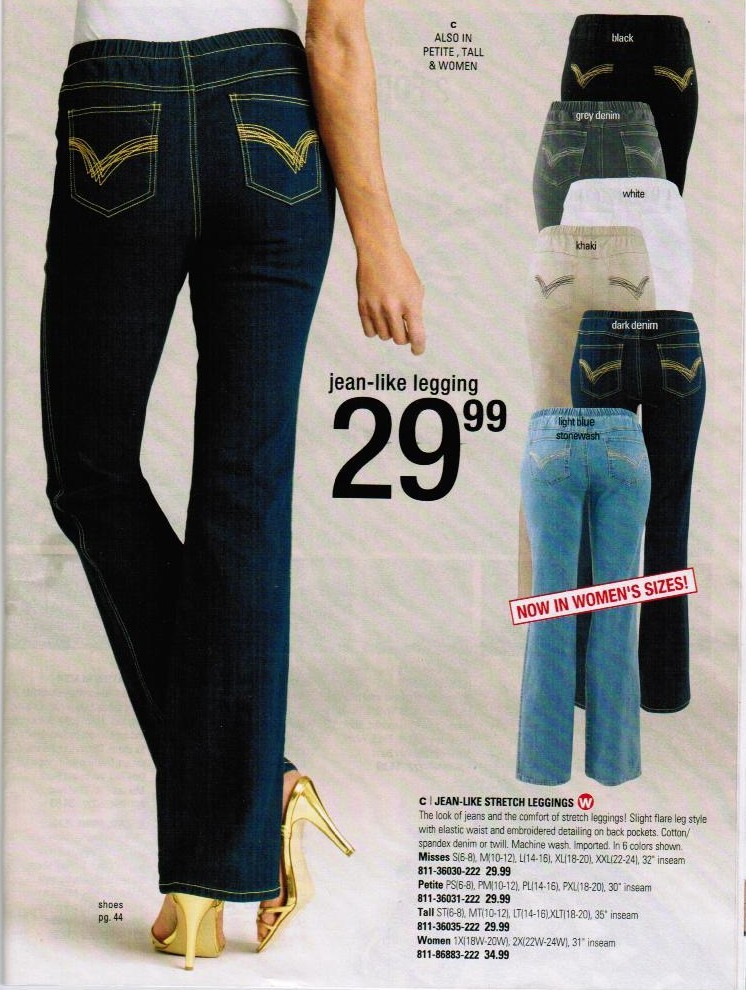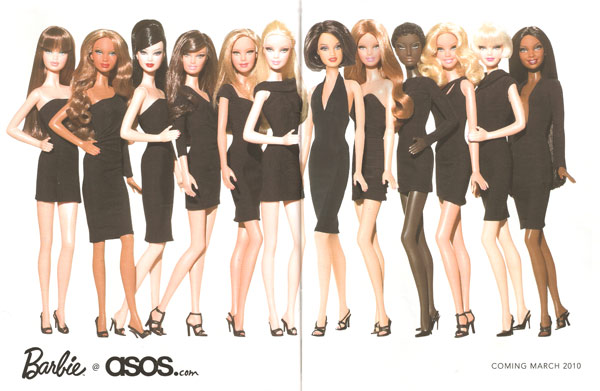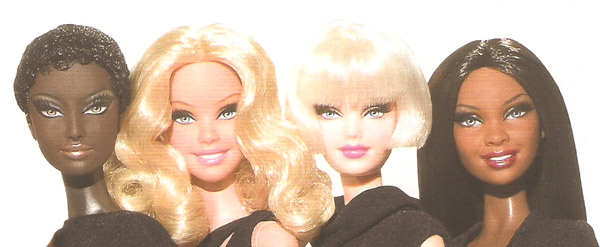Andrea t. B. sent in some photos released by Britney Spears from a series she did for Candies. Below, you can see the images side-by-side, before and after retouching, and get a sense of just how impossibly perfect our physical role models are made to be:
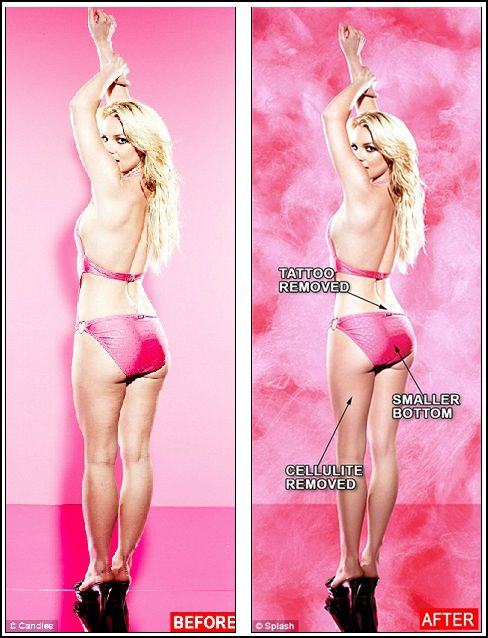 (From the Daily Mail.)
(From the Daily Mail.)
Jessica Simpson also appears on the cover of May’s Marie Claire without makeup:
I spoke with a reporter at the Associated Press yesterday who asked me if releasing photos without retouching or being photographed with out makeup was a trend.
Gwen and I agreed that, yes, it is a trend… but only insofar as the rules against doing so are so powerful that even a handful of female celebrities going sans makeup or retouching makes it SO AMAZING. In reality, what’s so amazing about this trend is that these women are choosing to release these photos. Photos of Simpson and Spears looking less than perfect are all over the internet, thanks to paparazzi. So it’s not as if un-retouched or unflattering pictures of these celebrities are anything new… it’s the voluntariness of the releases that is so fascinating.
The romantic might say that they really want to be role models for young girls. The cynic, however (e.g., me and Gwen), might suggest that there are ways that the might benefit from the release of these images. In both cases, this could be interpreted as an excellent career move.
Simpson has a new show, The Price of Beauty, questioning the cultural construction of beauty (with questionable success). So her photo shoot is likely a way to gain publicity for her program.
Spears’ motivation is less clear. On the one hand, she can claim the romantic narrative and gain the respect and admiration of (more) fans. On the other hand, some of the attention to those (often awful) paparazzi pictures may be displaced by these pictures. The truth is that she has a lot more control over these non-retouched photos than she does the candid shots. In the photos above, she has been made up by professional make up and hair artists and she is being shot by a professional photographer with perfect lighting and excellent instruction. She is also having these photos taken at the height of her fitness when her career is back on track instead of at a low point (psychologically, physically, and career-wise). So, given that all those truly unflattering photos are out there, these really re-represent the “real” Spears. They may draw just a bit of attention away from those images of her bald and attacking a car with an umbrella.
Of course, the motivations of Spears and Simpson, as well as the rationales of those in charge of their images, is left mysterious. What do you think? How much of this is about being an excellent role model? What else might be driving their decisions to take the risk of appearing without make up or retouching?
More discussion and examples of re-touching can be found through our retouch tag.
Lisa Wade, PhD is an Associate Professor at Tulane University. She is the author of American Hookup, a book about college sexual culture; a textbook about gender; and a forthcoming introductory text: Terrible Magnificent Sociology. You can follow her on Twitter and Instagram.


